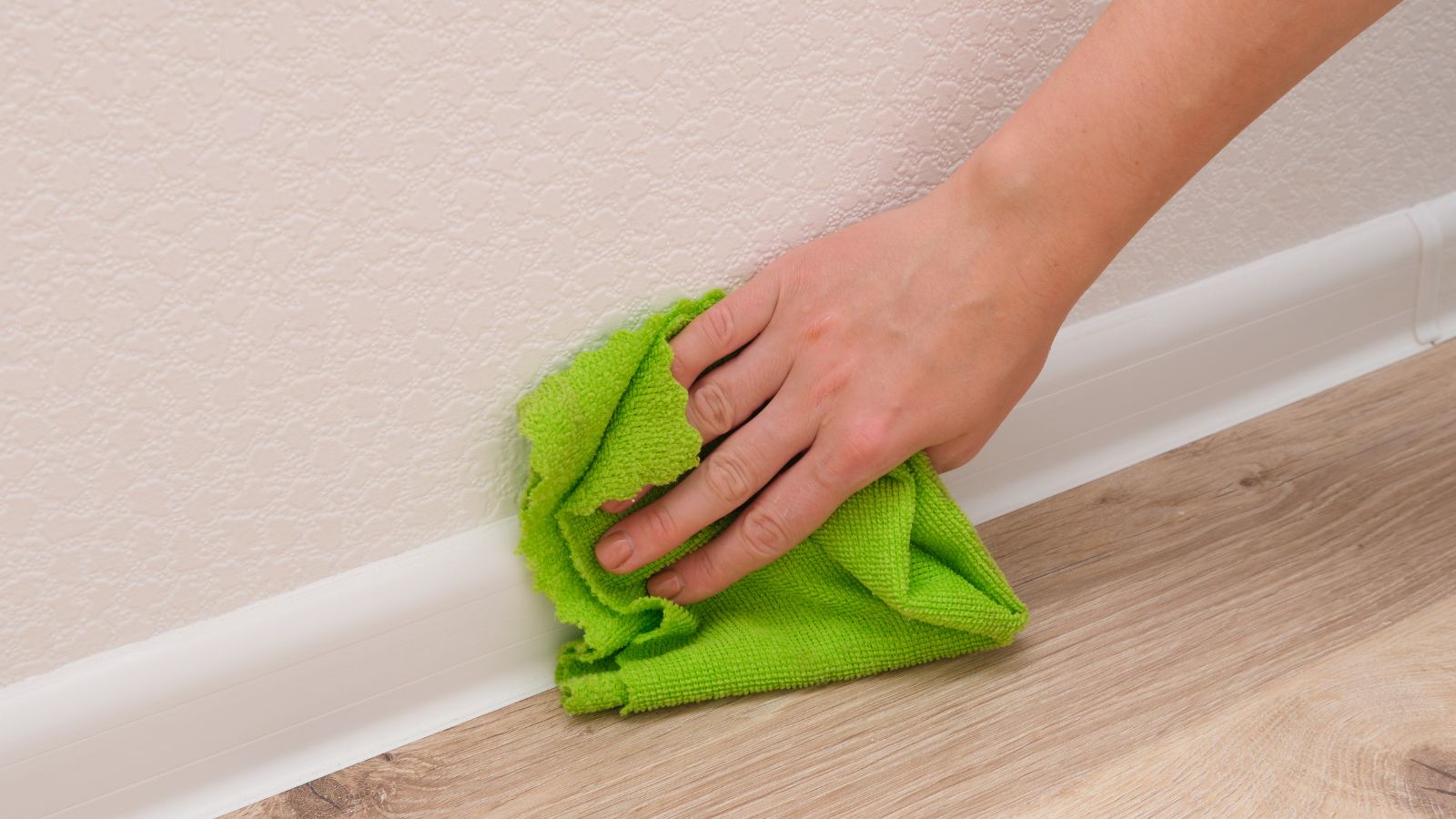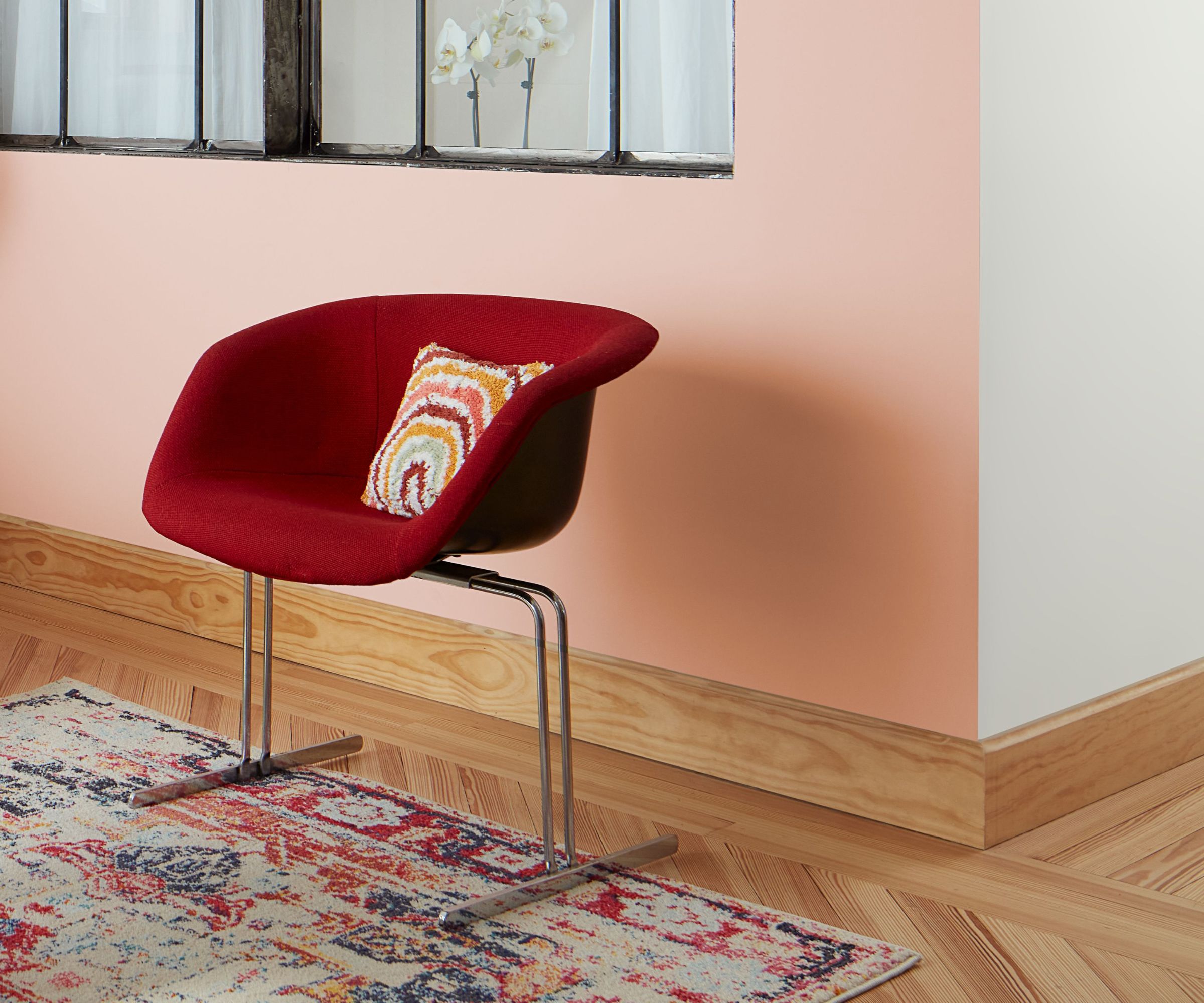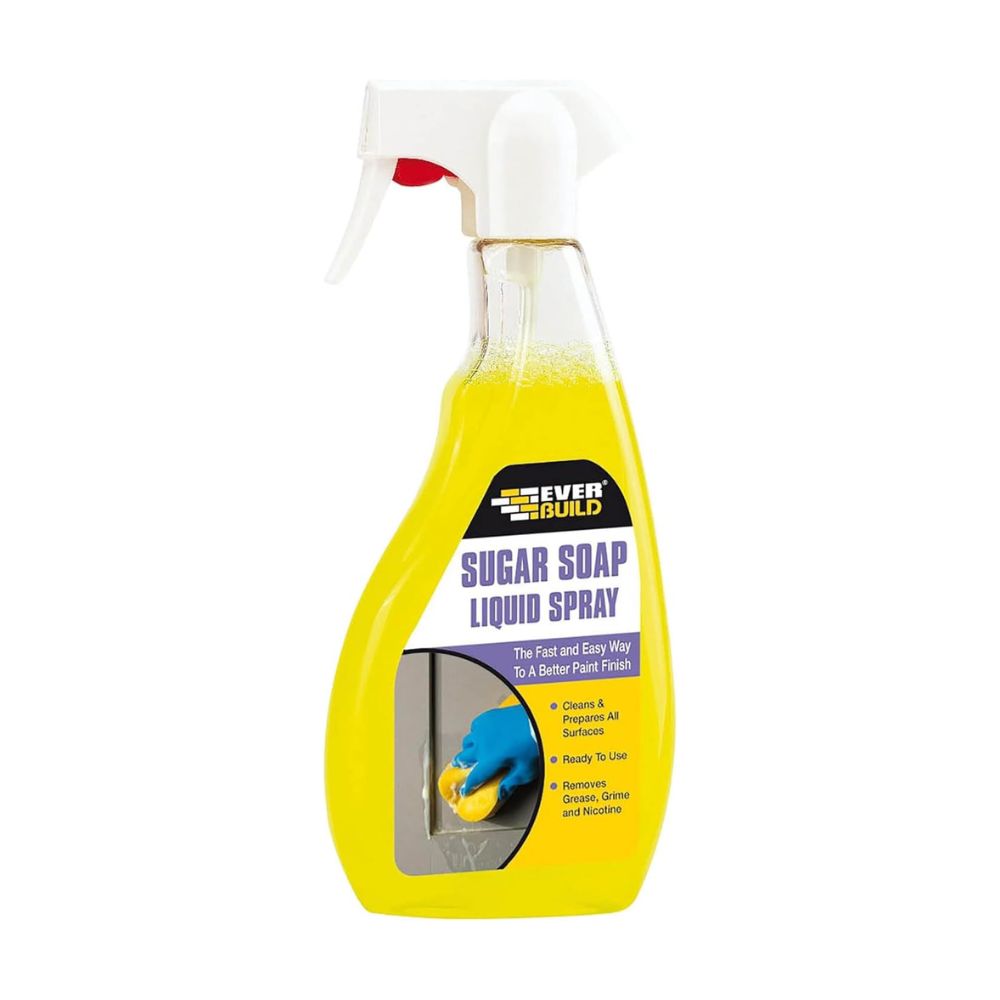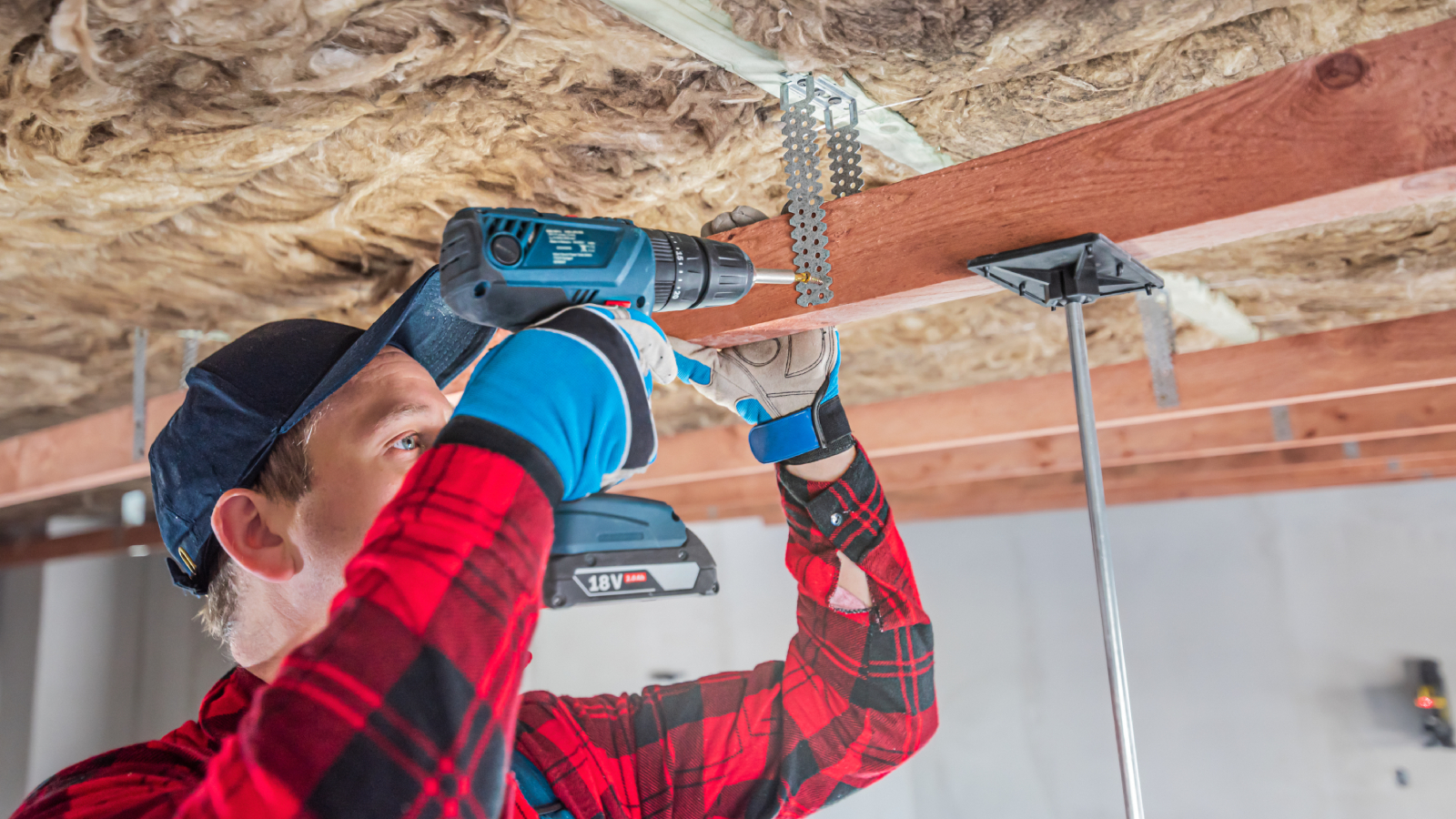Most people forget this cleaning job — and it could be making your home look dull
Learn the best way to clean skirting boards with expert tips for a spotless finish, from simple weekly dusting to deep-cleaning without damaging paintwork

Skirting boards rarely get a second glance, but look closely and you’ll see they’re doing more than you realise. They protect walls, frame floors, and, inevitably, gather a fair bit of dust in the process. In fact, skirting boards might be one of the most overlooked details in a home.
Clean trim can completely change the feel of a room, brightening walls and floors and giving your whole space a 'just-finished' look. The trick is knowing how to do it properly without ruining your paintwork or spending an afternoon on your hands and knees.
From smart tools that save you bending down to expert-approved cleaning methods that really work, here’s how to clean skirting boards the right way.
The best way to clean skirting boards

To find out the best way to clean skirting boards without damaging paint or spending hours on your knees, we asked experts Heather Nixon, sustainability manager at Bio-D, and Michael Bogoyavlenskiy, CEO of Cleaning Express, to share their tried-and-tested methods. Here are the steps they both recommend:
- Start with a vacuum
Use the nozzle brush or crevice tool to vacuum up any dust that may have collected on the top of the skirting board. This helps prevent dust from smearing when you start wiping down. If you have pets or a busy household, go over your skirting boards with your vacuum’s upholstery attachment each week to stop build-up. - Mix a gentle cleaning solution
Before you begin cleaning, slip an old towel or dust sheet along the base of the wall to protect your flooring from drips. Then, fill a bowl or bucket with warm water and add a few drops of washing-up liquid. This mild solution is perfect for lifting dust, grease and light scuffs without dulling paint or varnish.
"I would recommend Bio-D's Pink Grapefruit Washing Up Liquid from Ethical Superstore for this job," says Heather Nixon. "As well as being tough on dirt and grease, it's gentle on skin and has a lovely fragrance."
"If your skirting board is really dirty, you could also use sugar soap," adds Michael. "It shouldn’t have any impact on the paint or finish, but make sure you do a patch test first." - Wipe from top to bottom
Dip a microfibre cloth into your soapy water, wring it out thoroughly, and work your way along the boards from top to bottom. This prevents streaks or splashes from running down onto clean areas. For detailed profiles or decorative mouldings, a soft brush or old toothbrush will help reach into grooves. - Use a mop or duster for hard-to-reach spots
If you’d rather not bend down, attach a microfibre cloth to the end of a mop or use an extendable duster. Both make it easy to reach behind furniture or cover long stretches of skirting in open-plan spaces. - Dry and finish
Finally, buff each board with a clean, dry microfibre cloth to remove any moisture and bring back a light sheen. Once they’re clean, a quick weekly vacuum or dust is all that’s needed to keep them looking freshly painted.
A word of caution: If you painted your skirting boards in standard matte paint, be gentle when cleaning them. Michael Bogoyavlenskiy explains:
"Kitchen and bathroom paints should be water-resistant, but many standard matte paints aren’t. If you’re concerned about this, try to limit the amount of washing you do. Instead, you’ll just need to be as careful as possible when wiping down the skirting board."

Heather is Sustainability Manager at Bio-D, where she champions all things sustainable and innovate to bring the company some of the best products in the market whilst actively seeking positive change.

Michael Bogoyavlenskiy is CEO of Cleaning Express, a London-based cleaning company known for expert home care advice and professional, sustainable cleaning practices.
How often should you clean your skirting boards?
There’s no need to add “scrub skirting boards” to your daily checklist, but leaving them for months on end isn’t a great idea either. How often you clean skirting boards really depends on how lived-in your home is. In busy spaces like hallways and kitchens, where movement and cooking fumes stir up more grime, a quick wipe or vacuum every couple of weeks can make all the difference. In quieter rooms, once a month is usually plenty.
Bring your dream home to life with expert advice, how to guides and design inspiration. Sign up for our newsletter and get two free tickets to a Homebuilding & Renovating Show near you.
Heather Nixon recommends making cleaning skirting boards part of your regular routine rather than a separate task: “Wiping down skirting boards every few weeks will help to keep dust at bay,” she says. "Even a quick once-over with the vacuum nozzle can help prevent that dull grey line from forming along the edge of your floors."
Shop these cleaning essentials
FAQs
What should you not clean wood with?
According to Michael Bogoyavlenskiy, harsh chemical cleaners or anything abrasive should be avoided on wooden skirting boards, as they can strip varnish and dull the finish. Stick to mild washing-up liquid diluted in warm water, and always use a well-wrung cloth to prevent moisture damage, as excess water can cause timber to swell or leave tide marks on stained finishes.
Can you use vinegar to clean skirting boards?
Eco-friendly doesn’t always mean gentle on surfaces. So, while vinegar works well on glass and tiles, its natural acidity can damage paint or varnish on skirting boards over time. For a safer, sustainable clean, try a plant-based washing-up liquid or mild soap instead.
How do you clean skirting boards without bending over?
If kneeling isn’t ideal, Heather Nixon suggests attaching a microfibre cloth to the end of a mop or using an extendable duster to reach along the boards. These tools make it easy to clean behind furniture and across long runs without straining your back, which perfect for a quick once-over during your weekly vacuum.
We like this OXO Good Grips Extendable Microfibre Duster from Amazon UK, as it traps and holds dust without the need for cleaning chemicals, and extends up to 137cm with a quick twist.
If cleaning no longer cuts it and your trim needs a full refresh, you can remove skirting boards carefully with a crowbar, then fill and repaint for a smooth skirting board alternative. Or, for an easier update, read our guide to skirting over skirting.

Gabriella is an interiors journalist and has a wealth of experience creating interiors and renovation content. She was Homebuilding & Renovating's former Assistant Editor as well as the former Head of Solved at sister brand Homes & Gardens, where she wrote and edited content addressing key renovation, DIY and interior questions.
She’s spent the past decade crafting copy for interiors publications, award-winning architects, and leading UK homeware brands. She also served as the Content Manager for the ethical homeware brand Nkuku.
Gabriella is a DIY enthusiast and a lover of all things interior design. She has a particular passion for historic buildings and listed properties, and she is currently in the process of renovating a Grade II-listed Victorian coach house in the West Country.



